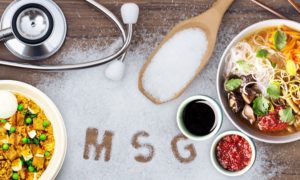
How to Manage and Reverse Lactose Intolerance
Being lactose intolerant sucks. If you even think about drinking some milk, your life suddenly becomes an unpleasant series of violent farts, bloating, and explosive diarrhea.

Contrary to popular belief, you don’t need cardio for any physique transforming goal. This is why some of the biggest, baddest, and even leanest guys and gals you know don’t do any cardio.
However, it seems there’s always a point in every lifter’s life, where they realize they need to add in just a little bit of cardio. It’s all fun and games to joke about cardio until you’re the one losing your breath after two sets of squats or can’t even keep up a decent hiking pace with your girlfriend.
So while it’s not as important as strength training, it does have it’s place. This then begs the infamous question, which type of cardio should I do?
The 2 main types of cardio are low intensity steady state (LISS) and high intensity interval training (HIIT).
LISS is done at a low intensity and maintains a steady pace, usually for moderate to longer durations. This would be like cycling, jogging, or running a 5k if you’re ever looney enough to sign up for one of those.
HIIT style of cardio is the opposite. Instead of being at a steady sustainable state, HIIT is performed in intervals or short bursts of high effort. For example, sprinting would be a form of HIIT. You would sprint with maximal intent for a short duration, take a short break, then go again until you completed a targeted number of sprints.
CrossFit, Tabata, group interval classes, bootcamp classes, and circuit training are also considered forms of a HIIT style of cardio.
So which is better, LISS or HIIT?
The first consideration when choosing between LISS or HIIT is specificity. Is there a specific adaptation (effect) you’re looking for?
For example, if you’re trying to become a marathon runner, it would make sense to train with LISS because it’s more specific towards your goal.
On the other hand, if you want to become one of those paleo worshipping CrossFit athletes, you would need to train with HIIT because CrossFit competitions are bouts of high intensity.
In addition, Liss is more specific to fasted training as it doesn’t suffer performance losses when done fasted.
Sport specific cardio might not even matter to you. You might be merely trying to improve your aerobic capacity so you’re not gasping for air after a set of heavy deadlifts.
In that case, it doesn’t really matter which type of cardio you choose. Both LISS and HIIT will give you similar aerobic adaptations (3).
However, HIIT does give you anaerobic adaptations tagged along due to resembling strength training, but this isn’t as big of a benefit as you would think (1). The anaerobic benefits from HIIT are not as valuable as strength training. You don’t build as much strength or muscle with HIIT compared to strength training, so the key anaerobic benefits are already achieved or can be achieved simply by proper strength training (2).
To make matters worse, unlike LISS, HIIT still resembles strength training in it’s demand on your body. It’s a bigger stress to recover from than LISS. For example, sprints produces muscle damage levels comparable to or higher than strength training (16).
This is why if you’re already strength training (which you should be), adding in HIIT won’t build more muscle, but it might hinder recovery if you’re not careful with the total amount of volume you’re doing each week.

Long story short, if you simply want some aerobic improvements, either or both will be fine, but HIIT requires more recovery.
For the average fitness enthusiast, 1-2 HIIT sessions (5-20 min) and/or 1-3 LISS sessions (10-30 min) per week should be more than enough to quickly improve aerobic capacity without hindering recovery.
Between LISS and HIIT type of cardio, there are 2 common school of thoughts.
Some people believe LISS is better for fat loss because the body burns a higher ratio of fat as fuel during LISS as opposed to HIIT.
Another group of people believes HIIT is way better for fat loss because the high intensity supposedly turbocharges your metabolism and burns additional calories even after you leave the gym.
Both these perspectives are kind of right, but mostly wrong. Let’s look at the science.

This systematic review showed both are equal when it comes to fat loss given the same amount of work and calories consumed (4). Even when it comes to appetite suppression, their effects are similar (15).
HIIT does allow you to get the work done in a shorter amount of time, so if you hate doing cardio, HIIT will be a better choice to get it over with (5).
The best recommendation for fat loss would be to do whichever one you enjoy most as the differences in effect is minor (14). However, if you want to save time, HIIT is the better choice.
I know somebody will ask about this, so let me explain this part in greater detail.
Many overzealous marketers claim HIIT has an after-burn effect, meaning your metabolism is elevated and burns additional calories even after you leave the gym.
The after-burn effect is also described as excess post-exercise oxygen consumption and is actually seen in both LISS and HIIT (6,7).
One study using 8 subjects, showed HIIT to be slightly advantageous in this department (7). It compared two work equated workouts with a LISS group running at 70% VO2 max for 30 minutes with a HIIT group sprinting 20 one minute intervals at 105% VO2 max. With the rest periods considered, the HIIT workout actually took way longer in this study.
The results did show energy expenditure favoring the HIIT group, but not much. The HIIT workout burned about 25 extra calories during the workout and 30 extra calories post-workout.

Another study using 12 subjects had the HIIT group train at 90% VO2 max showing no difference in the afterburn effect (8).
A recent systematic review did find HIIT had a higher afterburn effect, but this amounted to a few dozen calories (17).
On an unrelated note, strength training also has an afterburn effect, but unlike both LISS and HIIT, it’s more significant and lasts longer (9,10,11,12). Oh, how I love to talk about how awesome strength training is even though this article is about cardio lol.
Speaking of strength training, many bros wonder which cardio is better for your gains.
Cardio, regardless of what kind you choose has an interference effect. This means by doing cardio, you’ll compromise the amount of strength and hypertrophy progress you’re about to make.
The question is, which type of cardio has the least interference?
Science shows us, both LISS and HIIT have quite similar levels of interference with work equated amounts (13). Some research does find HIIT to be less of an interference due to resembling strength training on a molecular level (17,18).
The same research also found lower impact options like cycling is better than running due to less muscle damage (17). So if possible pushing a sled or some bike sprints are likely the best forms of cardio to do alongside strength training.
Here’s everything you need to know about LISS and HIIT condensed down into easy to read bullet points.
So for a majority of points, science is pretty much telling us, “Bro, stop overthinking it, there’s not much difference between LISS and HIIT.”
Personally, there are days I like doing HIIT when I’m short on time or simply because it makes me look hardcore.
And other days, I prefer LISS because I want to catch up on Netflix while I do some incline wlaking.
The type of cardio you choose likely won’t matter much. Just do whichever one you enjoy most or do both if you’re some indecisive freak.
A;, Howatson G;Milak. “Exercise-Induced Muscle Damage Following a Bout of Sport Specific Repeated Sprints.” Journal of Strength and Conditioning Research, U.S. National Library of Medicine, pubmed.ncbi.nlm.nih.gov/19826279/.
Panissa, Valéria L. G., et al. “Magnitude and Duration of Excess of Post‐Exercise Oxygen Consumption between High‐Intensity Interval and Moderate‐Intensity Continuous Exercise: A Systematic Review.” Wiley Online Library, John Wiley & Sons, Ltd, 12 July 2020, onlinelibrary.wiley.com/doi/abs/10.1111/obr.13099.
Wilson JM;Marin PJ;Rhea MR;Wilson SM;Loenneke JP;Anderson JC; “Concurrent Training: a Meta-Analysis Examining Interference of Aerobic and Resistance Exercises.” Journal of Strength and Conditioning Research, U.S. National Library of Medicine, pubmed.ncbi.nlm.nih.gov/22002517/.
Balabinis CP;Psarakis CH;Moukas M;Vassiliou MP;Behrakis PK; “Early Phase Changes by Concurrent Endurance and Strength Training.” Journal of Strength and Conditioning Research, U.S. National Library of Medicine, pubmed.ncbi.nlm.nih.gov/12741884/.
Sign up for AwesomeFitnessScience Weekly. You’ll get juicy insider secrets, updates, and stories.

Being lactose intolerant sucks. If you even think about drinking some milk, your life suddenly becomes an unpleasant series of violent farts, bloating, and explosive diarrhea.

Lose Fat While Building Muscle? Dream or Reality? If you’re like most people, you want to grow thicker slabs of hard muscle that attracts the

MSG is often criticized for numerous health detriments. Some claims include headache, sweating, heart palpations, burning sensations, nausea, brain toxicity, asthma, liver damage, and the death of all your pets.